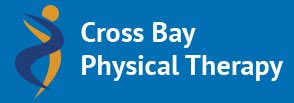Last week, during a training run, Olympic hopeful Heidi Kloser fractured her femur and tore ligaments in her knee. Although she’s out for the Sochi Games, she was with her team during opening ceremonies. In true Olympian style, she joined her team using a wheelchair, and later, crutches. She is expected to have surgery within the next few weeks and already has her sights set on the 2018 Olympics in South Korea.
Skiing injuries are very common. Because of the high rate of speed and twisting motions, skiers are at high risk for soft tissue injuries and fractures.
Recovery from a femur fracture depends on the severity of the fracture but in general, it takes between four and six months. This injury may require surgery to insert steel rods to aid with healing and will require some immobilization and the use of crutches.
Non-surgical alternatives include Platelet Rich Plasma Therapy, Stem Cell Therapy, and Autologous Bone Marrow Concentrate Therapy.
Physical therapy for femoral fractures includes knee/hip strengthening and stretching with progression to bearing weight on the injured leg. Physical therapy is also critical to restore range of motion and gait training to prevent further injuries. Ice therapy may be used to reduce swelling and inflammation. Soft tissue mobilization is often necessary for pain reduction and ease of movement. Because these types of injuries usually require mobility assistance, it’s important to have devices that are appropriate for your height and injury. The talented and experienced staff at Cross Bay Physical therapy in Howard Beach can fit and teach you how to use mobility aids, such as crutches, canes, or walkers.
For avid skiers, prevention is key. Sport specific training is necessary to learn proper alignment and technique. Cross Bay physical therapists can help you design an appropriate strength and stretching program so you can hit the slopes with the necessary skills to remain injury-free.
By Benjamin Bieber
